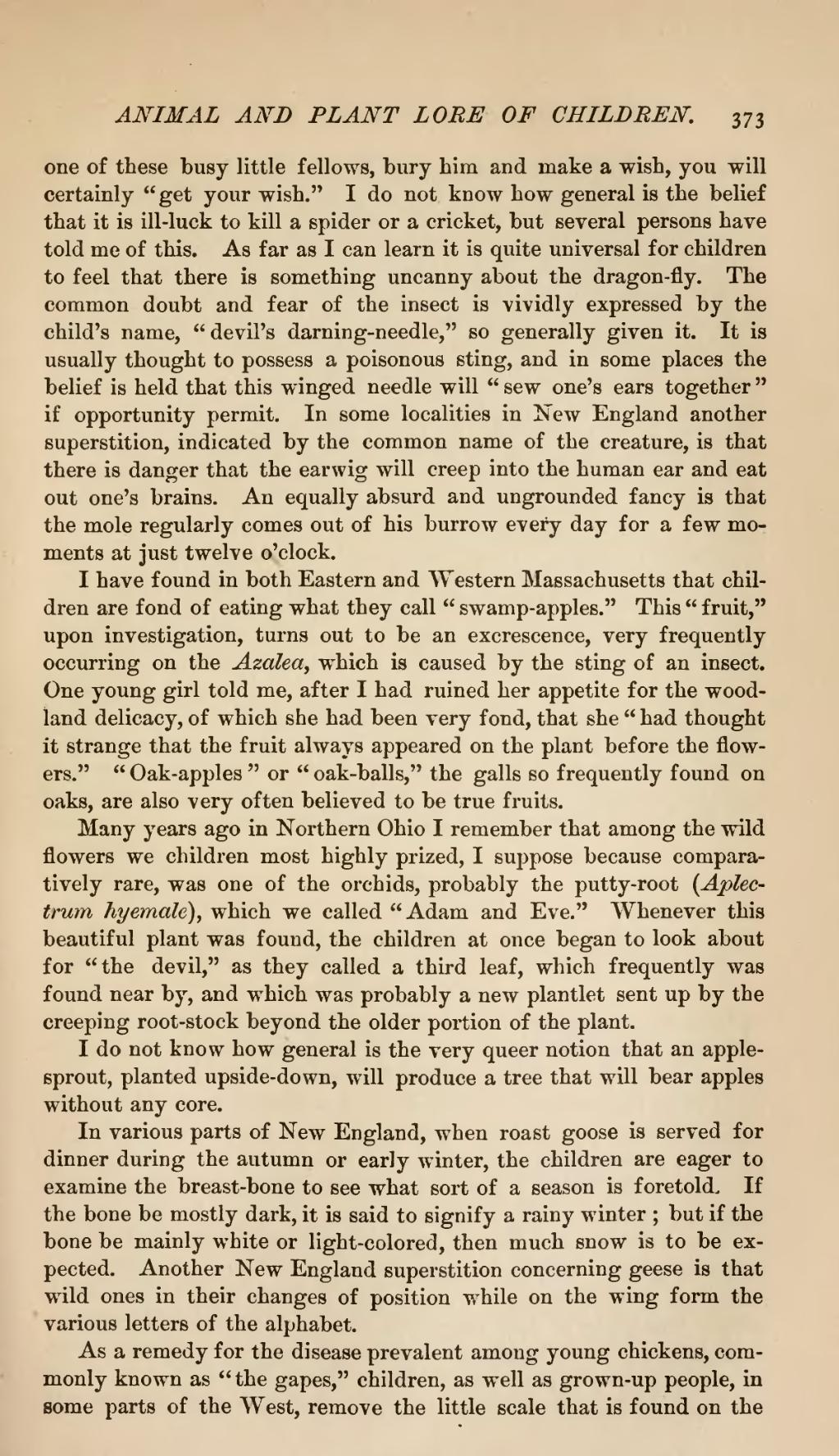one of these busy little fellows, bury him and make a wish, you will certainly "get your wish." I do not know how general is the belief that it is ill-luck to kill a spider or a cricket, but several persons have told me of this. As far as I can learn it is quite universal for children to feel that there is something uncanny about the dragon-fly. The common doubt and fear of the insect is vividly expressed by the child's name, "devil's darning-needle," so generally given it. It is usually thought to possess a poisonous sting, and in some places the belief is held that this winged needle will "sew one's ears together" if opportunity permit. In some localities in New England another superstition, indicated by the common name of the creature, is that there is danger that the earwig will creep into the human ear and eat out one's brains. An equally absurd and ungrounded fancy is that the mole regularly comes out of his burrow every day for a few moments at just twelve o'clock.
I have found in both Eastern and Western Massachusetts that children are fond of eating what they call "swamp-apples." This "fruit," upon investigation, turns out to be an excrescence, very frequently occurring on the Azalea, which is caused by the sting of an insect. One young girl told me, after I had ruined her appetite for the woodland delicacy, of which she had been very fond, that she "had thought it strange that the fruit always appeared on the plant before the flowers." "Oak-apples" or "oak-balls," the galls so frequently found on oaks, are also very often believed to be true fruits.
Many years ago in Northern Ohio I remember that among the wild flowers we children most highly prized, I suppose because comparatively rare, was one of the orchids, probably the putty-root (Aplectrum hyemale), which we called "Adam and Eve." Whenever this beautiful plant was found, the children at once began to look about for "the devil," as they called a third leaf, which frequently was found near by, and which was probably a new plantlet sent up by the creeping root-stock beyond the older portion of the plant.
I do not know how general is the very queer notion that an apple sprout, planted upside-down, will produce a tree that will bear apples without any core.
In various parts of New England, when roast goose is served for dinner during the autumn or early winter, the children are eager to examine the breast-bone to see what sort of a season is foretold. If the bone be mostly dark, it is said to signify a rainy winter; but if the bone be mainly white or light-colored, then much snow is to be expected. Another New England superstition concerning geese is that wild ones in their changes of position while on the wing form the various letters of the alphabet.
As a remedy for the disease prevalent among young chickens, commonly known as "the gapes," children, as well as grown-up people, in some parts of the West, remove the little scale that is found on the
